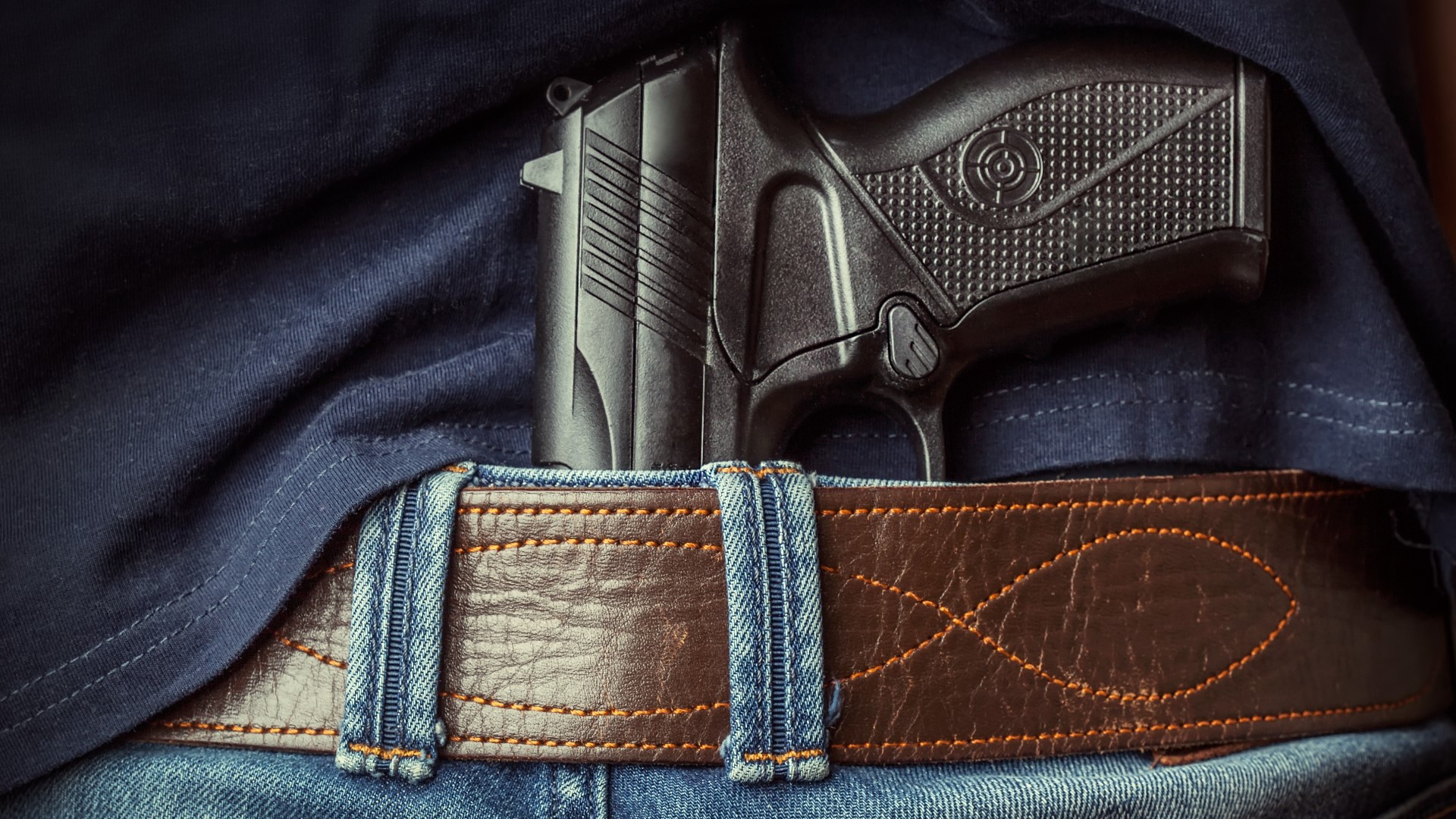COLUMBUS, Ohio — The Ohio House passed legislation Wednesday allowing Ohioans aged 21-and-up to carry concealed weapons without undergoing any background check or firearms training.
Under current law, Ohioans must complete eight hours of training and pass a background check via their local sheriff for a five-year, concealed carry license. The legislation would remove the requirement to seek licensure.
Shortly before approving the bill along party lines, Republicans swatted down a number of proposals from Democrats, including one that would have required the attorney general to create a one-page brochure detailing Ohio’s laws regarding the possession and use of weapons.
“There’s only one thing you need to read for this bill: the Second Amendment to the U.S. Constitution,” said Rep. Thomas Brinkman, R-Mt. Lookout, one of two lead sponsors.
The legislation would also remove Ohio’s duty under current law to “promptly” notify police during a traffic stop if they’re carrying a weapon. House Bill 227 only requires them to notify officers if they’re asked.
Passing “permitless carry,” as the legislation is commonly referred to, would forward a steady march of loosening Ohio’s gun laws. Ohio’s concealed carry program launched in 2004 and required 12 hours of training at the time. In 2006, lawmakers passed a bill blocking cities from passing gun control laws stricter than those of the state at large. Republicans passed a “stand your ground” bill last year that removes the legal duty to first seek retreat from a confrontation before responding with deadly force.
In 2021 to date, 706 Ohioans have died and 1,561 have been injured by firearms, according to data from the Gun Violence Archive, which compiles data from media, law enforcement and government sources.
“We seem to care more about guns than the people who die of gun violence each and every year in this state,” said Rep. Bride Rose Sweeney, D-Cleveland.
Over each of the last six years, about 3,900 concealed carry permits on average were either suspended, revoked or denied, according to data from the Ohio Attorney General. Republicans emphasized the legislation doesn’t change the underlying factors (criminal histories or mental incompetence) that warrant a “disability” from possessing a firearm in Ohio.
“If you have a disability, you still cannot be in possession of a firearm,” said Rep. Haraz Ghanbari, R-Perrysburg.
However, the legislation would remove a point of capture for some of these people who are not allowed to carry a concealed weapon but have sought permission to do so.
House Democrats, who control 35 of 99 seats in the chamber, tried and failed to amend several other anti-gun violence measures into the bill. These included closing loopholes that allow gun sales without background checks, or allowing families or law enforcement to petition judges to allow the temporary seizure of weapons from people experiencing mental health crises.
As the bill went through the House, anti-gun violence activists highlighted studies linking permitless carry laws to increases in violent crime. A 2018 working paper for the National Bureau of Economic Research found states with permitless carry laws experience roughly 15% higher rates of violent crime 10 years after adoption than they otherwise would have. Other research published in the American Journal for Public Health found that permitless carry laws were associated with 11% increases in handgun homicide rates.
When asked, House Speaker Bob Cupp, R-Lima, downplayed any link between a permitless carry policy and gun violence, noting that other states have adopted the policy.
"I don’t know that that has happened in any state that has it," he said. "We’re not doing anything novel here; we’re just kind of catching up."
Twenty-one states allow inhabitants (residents only in North Dakota) to carry a concealed weapon without a permit, according to a count from the U.S Concealed Carry Association. This includes neighboring states of West Virginia and Kentucky.
Also Wednesday, lawmakers passed separate legislation allowing school districts to authorize their teachers to arm themselves in school after undergoing certain training.

